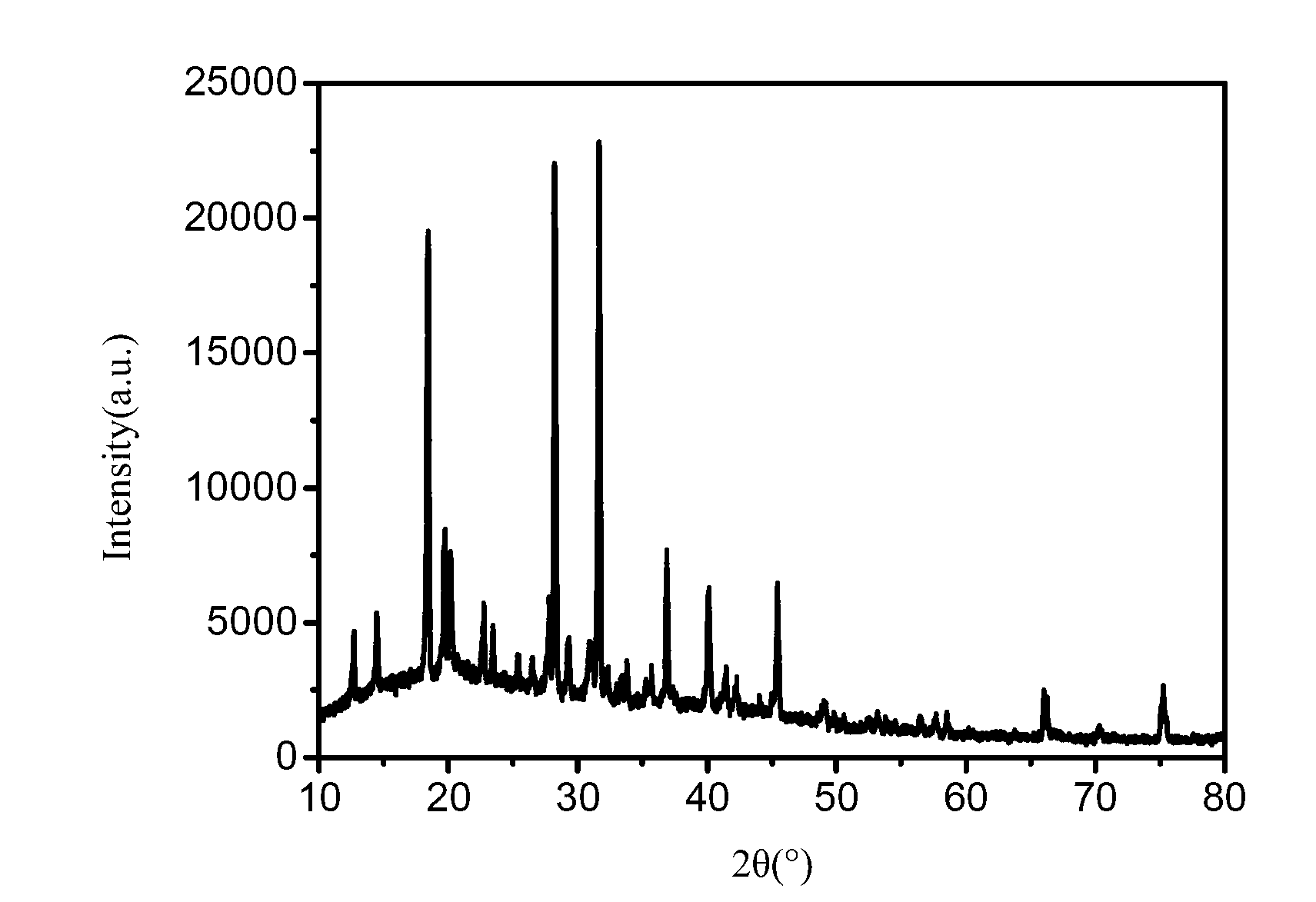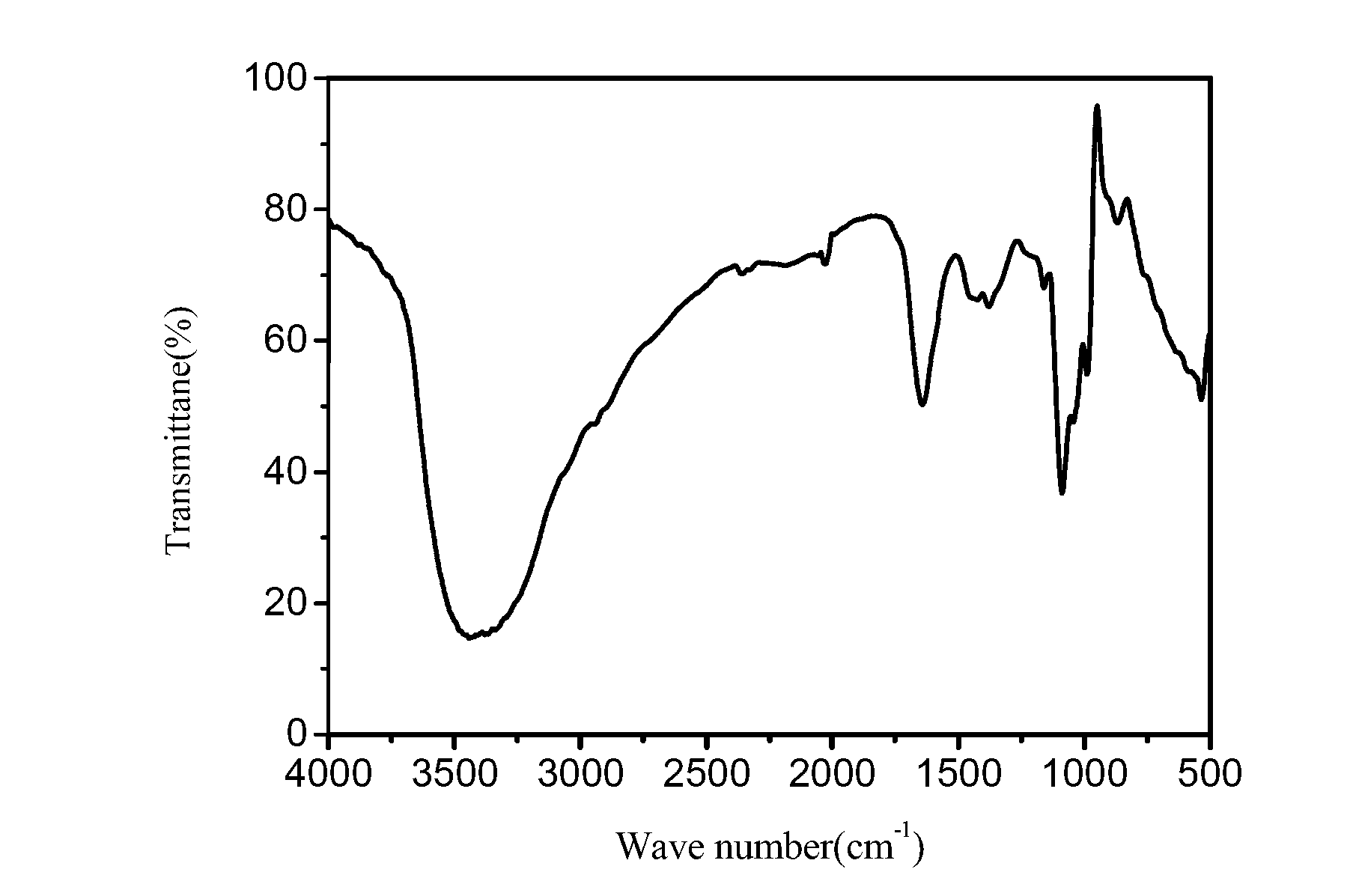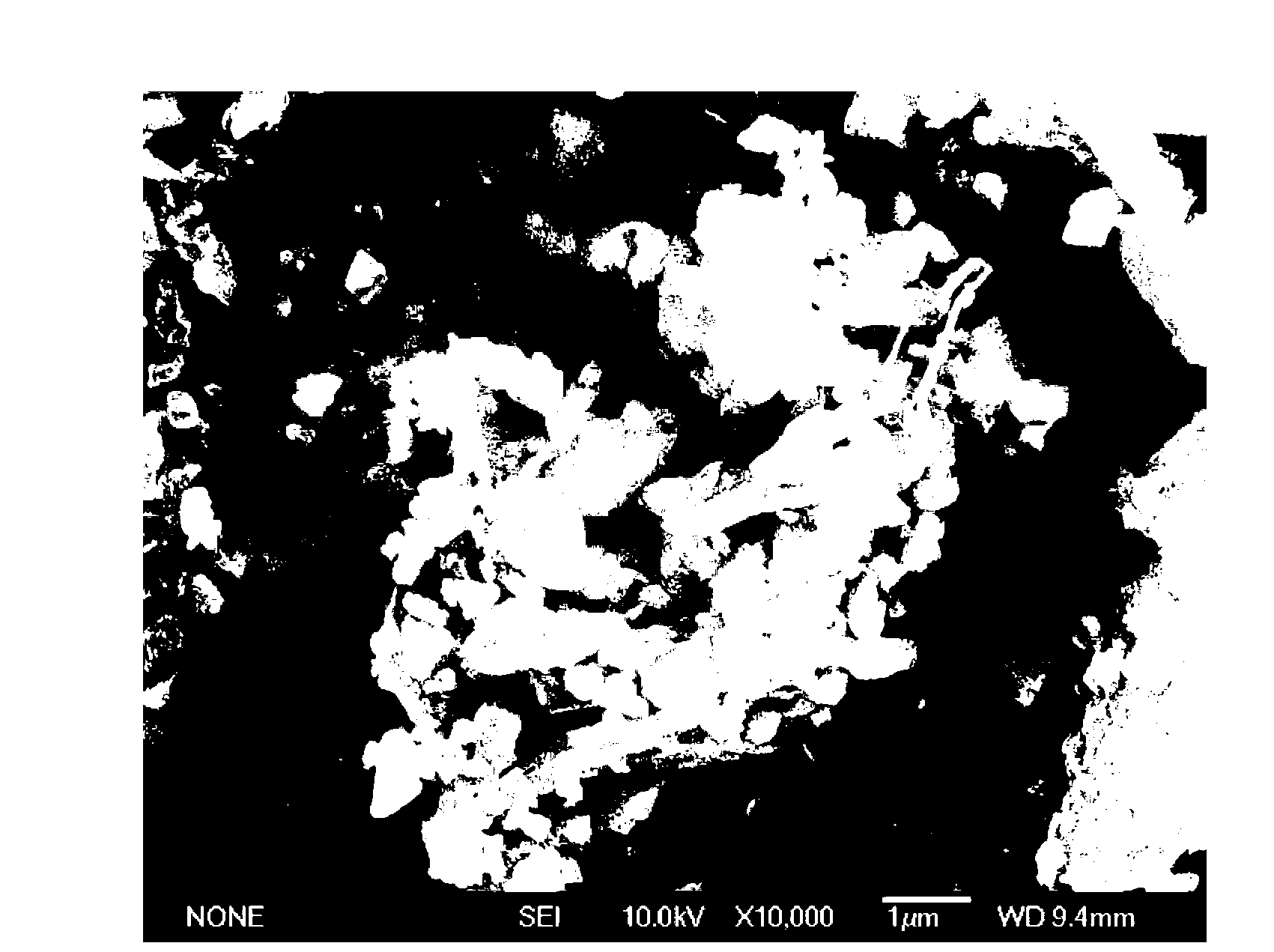Method for preparing lithium battery silicon carbon anode material
A negative electrode material, lithium battery technology, applied in the direction of battery electrodes, circuits, electrical components, etc., can solve the problems that cannot meet the needs, the effect is not very significant, and the effect is not very ideal, so as to avoid powdering and falling off, and reduce the first irreversible The effect of capacity and particle size reduction
- Summary
- Abstract
- Description
- Claims
- Application Information
AI Technical Summary
Problems solved by technology
Method used
Image
Examples
Embodiment 1
[0025] Add 5g of silicon powder with a particle size of 20 μm into the ball milling tank, carry out wet ball milling with absolute ethanol as the medium, and ball mill for 15 hours, then add 5g of natural graphite, continue ball milling for 2 hours and keep the ball-to-material ratio constant, and place the obtained material in Dry in a drying oven with the temperature set at 80°C until the solvent evaporates completely, grind and pass through a 200-mesh sieve to obtain the active material silicon-carbon composite material.
[0026] Dissolve 0.3g of sodium alginate in 7.5ml of deionized water, and add silicon-carbon composite material and acetylene black according to the ratio of active substance: acetylene black: sodium alginate = 75:10:15, stir for 2 hours, coat, then place Dry it in a drying oven at 80°C for 2 hours, then transfer it to a vacuum drying oven and dry it at 120°C for 12 hours to obtain a silicon-carbon composite material. The electron microscope photo is shown ...
Embodiment 2
[0029] Add 6g of silicon powder with a particle size of 10 μm into a ball mill tank, use deionized water as a medium to carry out wet ball milling, ball mill for 7 hours, then add 4g of natural graphite, continue ball milling for 5 hours and keep the ball-to-material ratio constant, and place the obtained material in a Dry it in a drying oven with the temperature set at 80°C until the solvent evaporates completely, grind it finely and set it aside.
[0030] Dissolve 0.3g of sodium alginate in 7.5ml of deionized water, and add silicon-carbon composite material and acetylene black according to the ratio of active substance: conductive agent: sodium alginate = 70:10:20, stir for 2 hours, coat, and then place Dry in a drying oven at 80°C for 2h, then transfer to a vacuum drying oven and dry at 120°C for 12h.
[0031] The negative electrode material prepared above is used as the negative electrode, the lithium sheet is used as the counter electrode, the electrolyte is 1mol / L LiPF6 ...
Embodiment 3
[0033] Add 7g of silicon powder with a particle size of 30 μm into a ball milling tank, and carry out wet ball milling with cyclohexane as a medium for 20 hours, then add 3g of natural graphite, continue ball milling for 2 hours and keep the ball-to-material ratio constant, and place the obtained material in a Dry it in a drying oven with the temperature set at 80°C until the solvent evaporates completely, grind it finely and set it aside.
[0034] Dissolve 0.3g of sodium alginate in 7.5ml of deionized water, and add the active substance and conductive agent according to the ratio of active substance: conductive agent: sodium alginate = 75:20:10, stir for 2 hours, apply, and then dry Dry in oven at 80°C for 2h, then transfer to vacuum oven and dry at 120°C for 12h.
[0035]The negative electrode material prepared above is used as the negative electrode, the lithium sheet is used as the counter electrode, the electrolyte is 1mol / L LiPF6 EC / DMC (Vol:Vol=1:1) solution, the separa...
PUM
| Property | Measurement | Unit |
|---|---|---|
| particle diameter | aaaaa | aaaaa |
| particle diameter | aaaaa | aaaaa |
| particle diameter | aaaaa | aaaaa |
Abstract
Description
Claims
Application Information
 Login to View More
Login to View More - R&D
- Intellectual Property
- Life Sciences
- Materials
- Tech Scout
- Unparalleled Data Quality
- Higher Quality Content
- 60% Fewer Hallucinations
Browse by: Latest US Patents, China's latest patents, Technical Efficacy Thesaurus, Application Domain, Technology Topic, Popular Technical Reports.
© 2025 PatSnap. All rights reserved.Legal|Privacy policy|Modern Slavery Act Transparency Statement|Sitemap|About US| Contact US: help@patsnap.com



